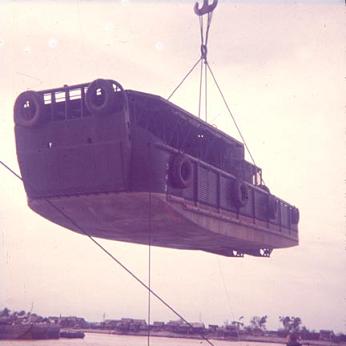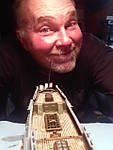Howdy fellas,
Thx for checkin' out my Tango progress....
Gino said..."
Wouldn't it be easier to make a hollow, box-like structure to add to each side as opposed to laminating sheet styrene? Or, cut the hull sides off and add the extra width with a sheet styrene box between the outer hull and inner hull? "....
To answer your question directly, yes it would. If I may elaborate on your point?
Because I needed to maintain the original hull side 'plan view' profile, I originally planned to use a sign foam and just bend it up against the side of the hull. But I wasn't entirely happy with the forming properties of the foam. So I then was going to switch to three sheets of Basswood glued to the hull sides. Since I am quite comfortable working in this medium (wood), ,I felt it would be the easiest and the most accurate way to form the hull extensions.
But then, in my 'funny', self-flagelating way, I wanted to at least
try this old method I'd read about on some Sci-Fi website regarding the old Gerry Anderson production studio techniques.....ya see, I'm the type of crazy person who feels that you shouldn't comment (in an advisory capacity) on anything unless you've actually
done it. Soooooooo, hence the wrestling match with the 'diminishing outline' method of mauqette-making............
Anyway, it's almost done, and to be honest I feel pretty good about the finished piece. It now weighs about 6 pounds, but it's solid as a rock!......

To the measurements:
The original LCM (3) hull width was approx. 14' wide, and it's hull height being
just under 7' at the main deck plate as you can see in this schematic...

The lengthened, or 'stretched' version of the LCM (3) was the LCM (6) which was lengthened by adding 6' amidships, or right in the belly of the troop compartment as shown here by an unretouched photo of the newly configured LCM (6) version during sea trials. You can see where they added the new section by the unpainted section in the middle of the ship.......

Now, the LCM (6), in this hull configuration was used by the French in Indochina and Vietnam for quite awhile. Infact some of the earlier configurations (pre-floatation sponson addition) are very interesting indeed.
Then the Americans arrived on scene and continued to use the boat in this original form. But, in typical US fashion, the quickly increased 'scope of work' that was being required of the craft demanded some changes. One of the first changes made was an increase in the 'floatability' of the boat to handle substantially increased weight.
The addition of floatation sponsons was the answer they came up with. These added 'saddlebags' increased the overall width of the LCM (6) hull to a total of approx. 17' 6". Again, this is pre-bar-armour, and the additional 'skinning' that some boat crews applied.
The new dimensions can be seen here......

At first I thought the added floatation 'sponsons' were exactly that, added, but after further investigation I found that they were much closer to a true retrofit, than an applique-style installation. A good picture illustrating this, and showing just how
much the sponsons expanded the hull width can be seen here, with one of the Tango boats suspended from a crane..........

And finally, an overhead shot of one of the Tango boats being assembled before deployment again shows the upper deck, and the increased width of the hull compared to the original LCM (3) that it was based upon......

With any luck all of this ramble helps those interested in better understanding both the boats themselves, and at least
part of it's evolution.......

Tread.

Oh, and in this last photo, the metal canvas supports you see that are above the troop compartment , are the 'early' type, before they switched over to the ballistic covers...

 Too many hits to the head I guess.
Too many hits to the head I guess. 

























